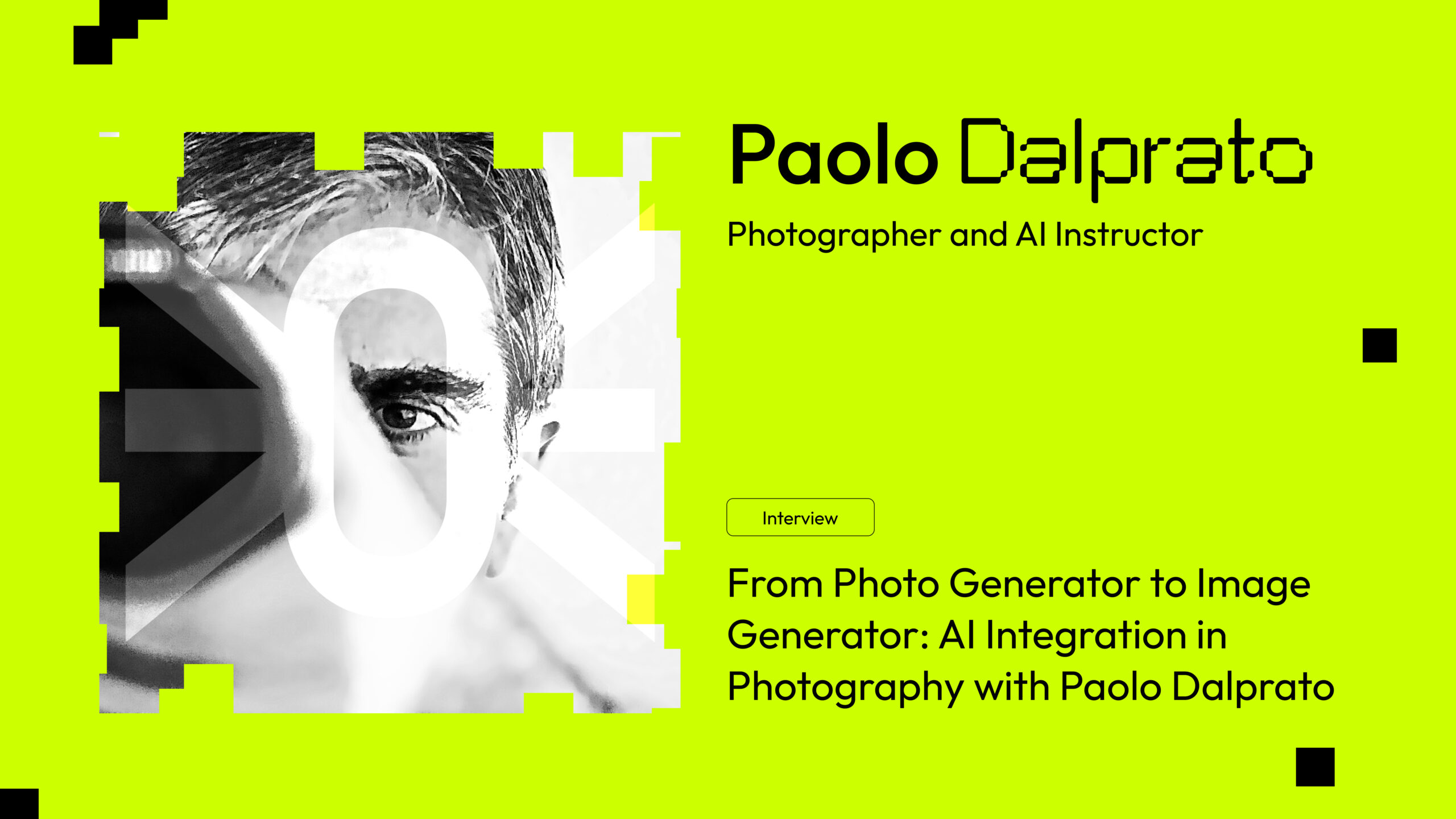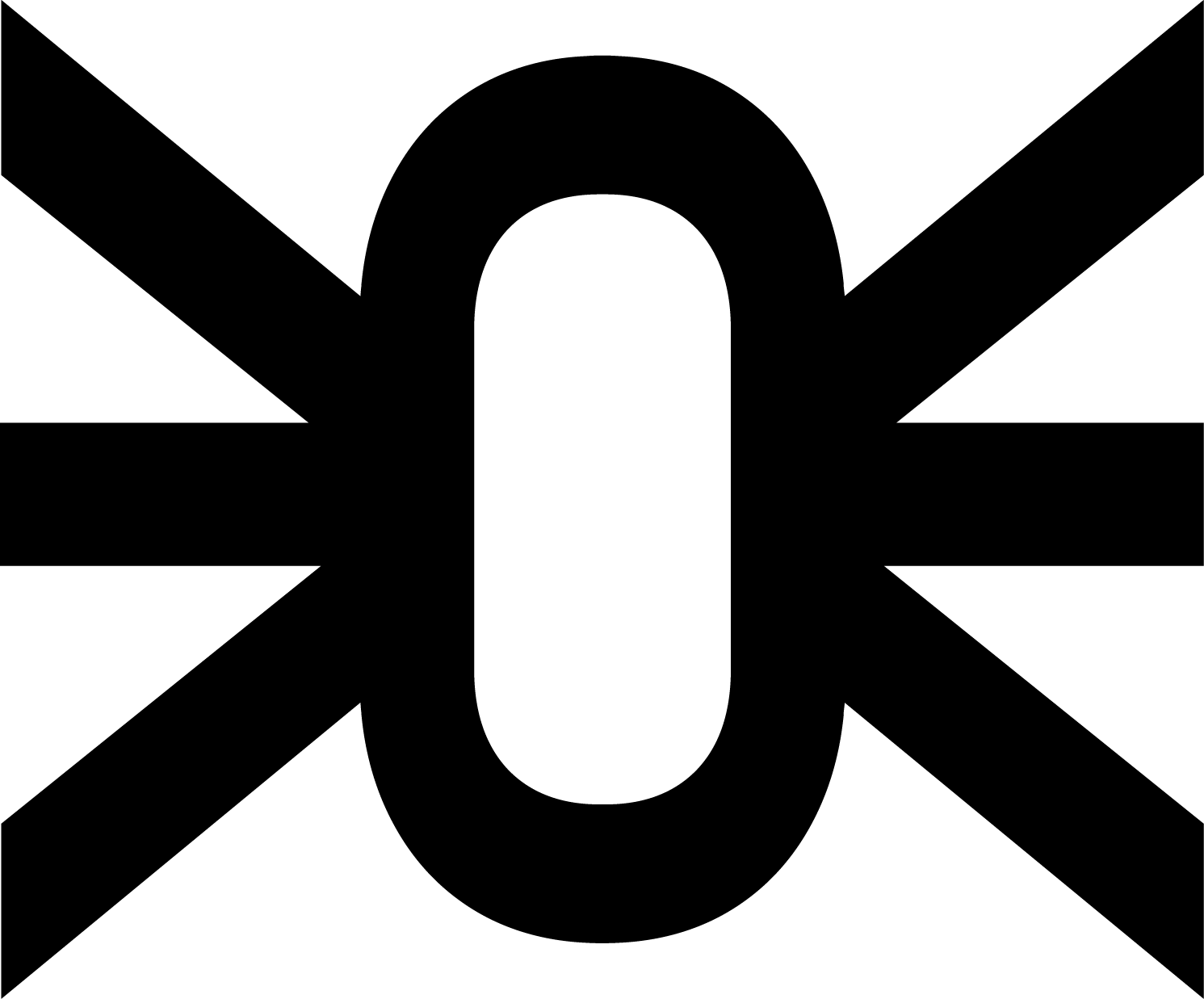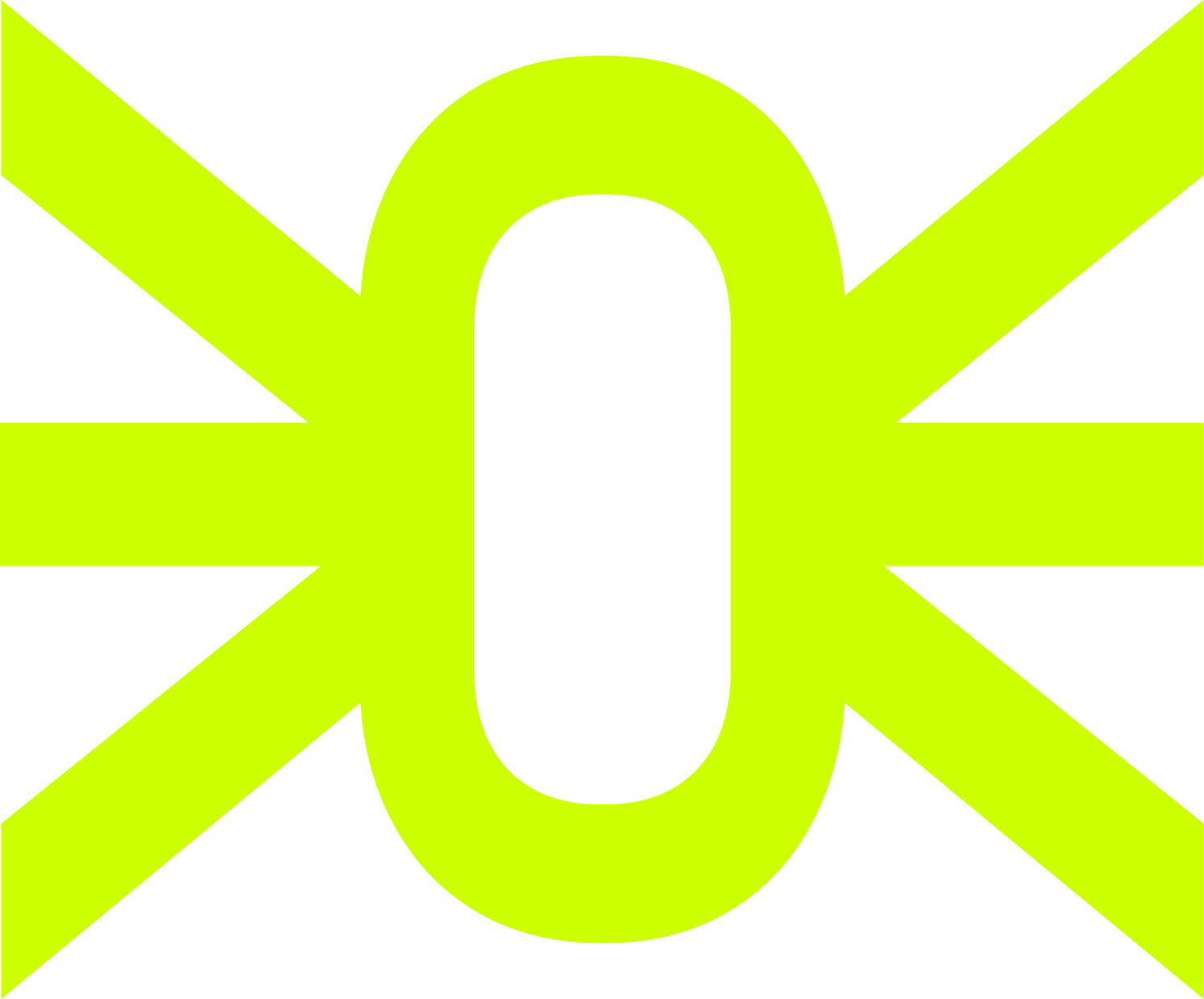From Photo Generator to Image Generator: AI Integration in Photography with Paolo Dalprato

Here we are with Aracne’s first interview. Today, we are with Paolo Dalprato, a photographer and trainer specializing in artificial intelligence, who has managed to combine his passion for imagery and technology, exploring new creative frontiers. Paolo has integrated the use of AI into his projects, utilizing tools such as Stable Diffusion and Midjourney, and is actively involved in training to promote a deeper understanding of AI’s potential in the visual field. Additionally, he runs the blog ai-know.pro, where he shares his experiences and knowledge about the world of artificial intelligence.
Could you tell us a little about yourself and your career journey? How did you come to combine your passion for photography with the use of AI technologies?
My professional journey has been a continuous evolution, driven by my passion for imagery and technology. I started as a traditional photographer, exploring various genres and techniques, but I always had a strong interest in technological innovation. With the advent of artificial intelligence, I saw an opportunity to merge these two passions.
Currently, I define myself as a trainer specializing in artificial intelligence, with a particular focus on creative applications. This transition wasn’t sudden, but the result of years of experimentation and learning. I’ve spent a lot of time understanding AI’s potential in the visual field, studying algorithms, participating in workshops and conferences, and experimenting with various tools.
A significant moment in my journey was when I participated as a speaker at an AI-focused event organized by the Politecnico delle Arti in Florence. On that occasion, I had the opportunity to present a lecture on AI and photography, sharing my experiences and insights with an academic audience. This experience strengthened my belief that there is a great need for training and dissemination in this field, especially to bridge the gap between those who study, develop, and profitably use AI and the rest of the world, which still has, even today, a vague and often distorted idea of what’s happening.
My evolution from photographer to AI trainer wasn’t just a career change but an expansion of my creative abilities. I use my photographic experience as a foundation to explore new forms of visual creation enabled by AI. This allows me to offer a unique perspective.
You have explored various generative AI tools for creating images and videos. What are your favorite tools and why?
In the course of my exploration of generative AI tools, I’ve had the opportunity to experiment with various platforms and technologies. However, there are two tools that have stood out and become my favorites: Stable Diffusion and Midjourney.
Stable Diffusion, especially with the Comfy UI interface, has become my go-to tool for product photography and projects requiring a high degree of control and customization. What I particularly appreciate about Stable Diffusion is its flexibility and the ability to be fine-tuned for specific tasks. The Comfy UI version, in particular, offers a visual interface for creating complex workflows, allowing a level of control that I find essential for professional projects.
Midjourney, on the other hand, excels in the rapid creation of high-quality images that resemble stock photos. Its user-friendly interface and the ability to quickly generate different variations make it ideal for the creative brainstorming phase or projects requiring quick iteration. I find Midjourney particularly useful for creating mood boards or quickly generating visual concepts for clients. It’s also an excellent partner in visual research, truly a companion in a creative journey.
My preference for these two tools comes from their complementarity. While Stable Diffusion offers granular control and the ability to create customized workflows, Midjourney shines for its immediacy and the quality of the images produced with minimal input.
I’m following the evolution of these tools with great interest. For example, the integration of technologies in Stable Diffusion is opening up new possibilities for precise image generation control. At the same time, Midjourney’s continuous updates are constantly improving the quality and variety of images it can produce.
My choice of tools reflects a balanced approach between detailed control and creative speed, allowing me to adapt to the different needs of the projects I work on.
What are your main concerns regarding how the average person is approaching artificial intelligence? Do you think there are common misunderstandings or underestimated risks that should be addressed?
One of my main concerns regarding the average person’s approach to artificial intelligence is the tendency to perceive it as some sort of technological “black magic.” This perception can lead to two equally problematic extremes: on one hand, unfounded fears and resistance to change; on the other hand, unrealistic expectations and excessive trust in AI’s capabilities.
The problem with viewing AI as “magic” is that it obscures the reality of what AI can and cannot do. Many people don’t understand that AI, no matter how advanced, is fundamentally a tool that requires human input, creative direction, and careful attention to the data used for training. This misunderstanding can lead to scenarios where people expect AI to solve all problems with a simple click, without understanding the work and expertise required to use these tools effectively.
Another underestimated risk is the potential loss of fundamental human skills. If people start relying too heavily on AI for creative or decision-making tasks, there is a risk of atrophy in human abilities in these areas. It’s crucial to maintain and cultivate human skills alongside the use of AI, rather than seeing it as a complete replacement.
There is also a concern regarding fairness and access. While AI is becoming increasingly powerful and accessible, there is a risk of creating an even deeper digital divide between those who have access and skills to use these technologies and those who are excluded.
To address these misunderstandings and risks, I believe it’s essential to invest in education and training. Not just at a technical level, but also at an ethical and philosophical level. People need to understand not only how to use AI but also the broader implications of its use in society.
Additionally, it’s important to promote a critical and reflective approach to AI use. We need to encourage people to think not only about what AI can do but also about what it should do, considering the ethical and social implications of its applications.
Finally, I believe it’s crucial to maintain a balanced perspective. AI is neither a panacea for all the world’s problems nor an imminent existential threat. It’s a powerful tool that, if used wisely and consciously, can amplify our creative and cognitive abilities, but it always requires human guidance and judgment.
What is your vision for the future of AI? What innovations or emerging trends do you foresee in the photography and fashion sectors due to AI integration in the coming years?
My vision for the future of AI in these fields is one of increasingly deep and sophisticated integration of these technologies into creative and production processes. I see AI not as a replacement for human creativity but as a powerful amplifier and catalyst for new forms of artistic expression and innovation in design.
In photography, I foresee tools like Stable Diffusion and Midjourney continuing to evolve, offering increasingly advanced capabilities. I imagine a future where these tools can generate photorealistic images with an unprecedented level of detail and control. This could lead to new forms of conceptual photography, where the artist can create scenes impossible to achieve in the physical world, expanding the boundaries of what we consider “photography.”
An emerging trend that I find particularly promising is the increasingly close integration of different modalities—text, image, video, and even audio. This multimodal convergence could lead to new types of interactive and immersive content, where the line between photography, video, and augmented reality becomes increasingly blurred.
In the fashion sector, I see enormous potential for AI in personalization and sustainability. I imagine advanced virtual try-on systems that will allow customers to accurately visualize how a garment will fit their body, reducing returns and improving customer satisfaction. AI could also revolutionize the design process, generating endless variations of styles based on trend input and individual preferences.
Another area of innovation could be the use of AI to optimize the fashion production chain, reducing waste and improving sustainability. AI systems could more accurately predict market trends, allowing for more targeted production and reducing excess inventory.
However, I firmly believe that the value of human experience and creativity will remain crucial. AI will serve as a powerful amplification tool, but it will be human creative vision that guides the use of these technologies in innovative and meaningful ways.
I also foresee new professional specializations emerging at the intersection of AI, photography, and fashion. Roles like “AI Fashion Designer” or “AI-Assisted Photographer” could emerge, requiring a unique combination of technical skills and artistic sensitivity.
Finally, I believe we will see an evolution in how we perceive authenticity and originality in art and fashion. As AI makes high-quality image creation more accessible, the value will increasingly shift toward the idea, concept, and narrative behind the image, rather than its mere technical execution.
In short, I see a future rich with possibilities, where AI doesn’t replace human creativity but enhances it, allowing for new forms of expression and innovation in the world of photography and fashion.
How do you think artificial intelligence is changing the field of photography? What will happen to photographers?
Artificial intelligence is undoubtedly transforming the field of photography in profound and multifaceted ways. However, I don’t believe this will lead to the “end” of photographers, but rather to a significant evolution of the role and skills required in this field.
Firstly, AI is democratizing the creation of high-quality images. Tools like Midjourney and Stable Diffusion are making it possible for anyone to generate surprisingly realistic and artistic images with minimal input. This certainly poses a challenge for professional photographers specializing in certain types of images, particularly in the field of commercial and stock photography.
However, I believe this democratization will lead to a bifurcation in the field of photography. On one hand, we will see photographers who choose not to use AI, focusing instead on offering a unique and authentic experience that AI cannot replicate. These photographers might emphasize craftsmanship, authenticity, and the human experience in the photographic process. I think, for example, of photographers like Sebastião Salgado, whose work goes far beyond mere image creation, including deep social commitment and a human connection that AI cannot replicate.
On the other hand, there will be photographers, myself included, who will become “image generators,” incorporating AI into their workflow to expand their creative capabilities. These professionals will use AI as one of the many tools in their creative arsenal, combining it with traditional photographic techniques and other digital technologies to create unique works.
The important thing for both groups will be to offer value that goes beyond what AI can do alone. For example, a photographer might use AI to quickly create mood boards or explore visual concepts, but then apply their experience and artistic vision to produce the final images using traditional methods. Or they might use AI to automate tedious aspects of post-processing, allowing them to focus more on creative vision and visual storytelling.
Another important aspect is that AI is changing what we consider “photography.” With the ability to generate photorealistic images from scratch, the boundary between photography and other forms of visual art is becoming increasingly blurred. This could lead to new forms of artistic expression that combine elements of photography, digital painting, and AI generation in ways we haven’t yet imagined.
I don’t believe that photographers will disappear, but rather that the role will evolve. Photographers of the future will need to be versatile, technically skilled not only in using the camera but also in utilizing AI, and capable of offering a unique artistic vision that goes beyond mere image creation. The key will be adaptability and the ability to find one’s unique space in this new technological landscape, whether by fully embracing AI or focusing on more traditional approaches.


